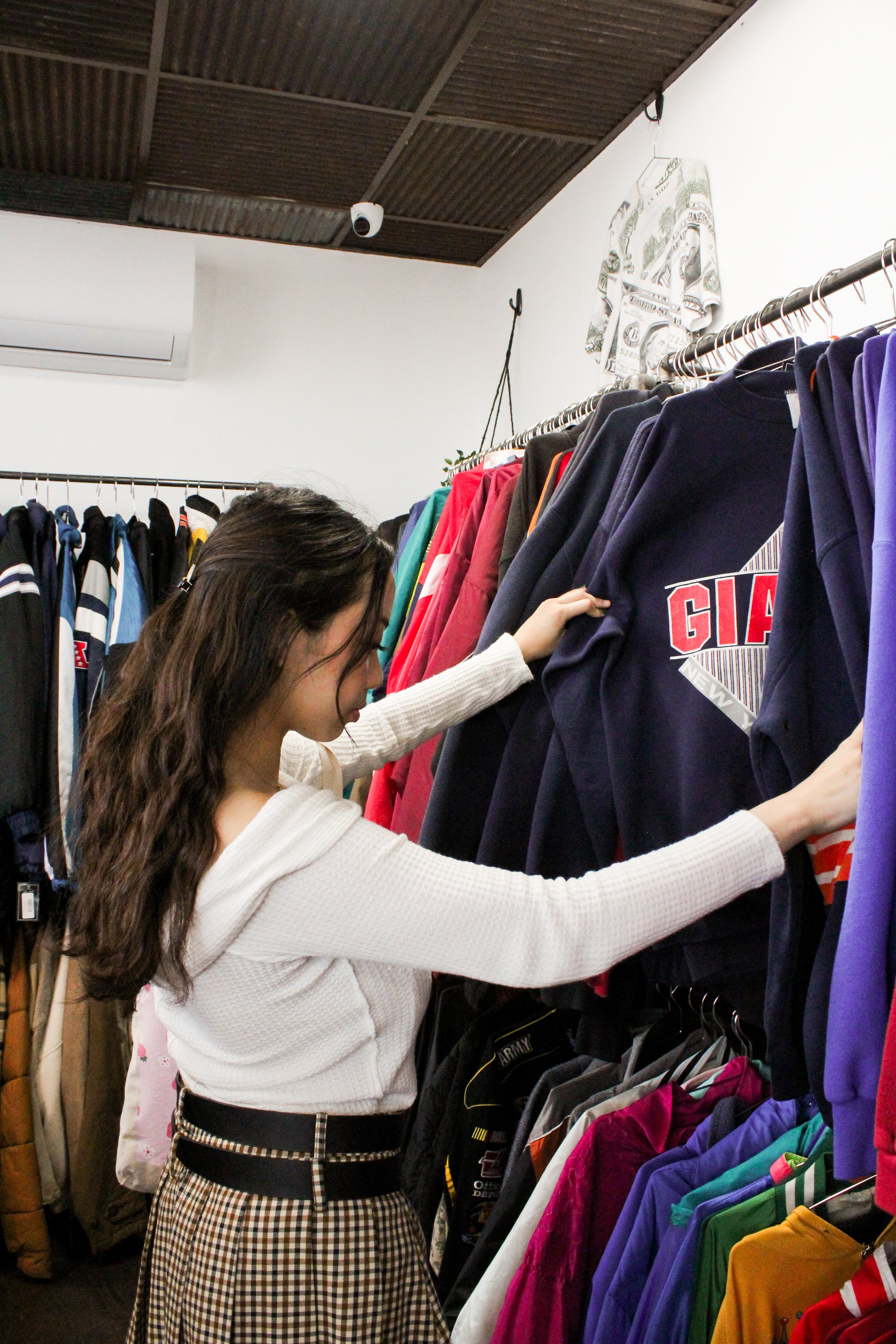Turning Wardrobe Woes to Wins
SZA, Sarah Jessica Parker, and Lorde all agree on one thing: thrifting is as tempting and economical as the Las Vegas slot machines. Even the A-Listers agree that shopping at a thrift store is the solution for a wide range of wardrobe issues. Whether you’re opting for a cost-effective alternative, seeking out more vintage additions, or exploring a wardrobe with ethical origins, all of these can be remedied by buying second-hand pieces. Even Sza labeled thrift stores “the devil” in one interview, emphasizing how little she would spend for the quantity of clothes she could find.
Thrifting traces its roots to the 1920s, but once Christian charities founded the Salvation Army a few years later, this concept became popularized and the stigma surrounding it had diminished. Since then, thrifting has fought to maintain its presence as a viable shopping experience. For many, the concept of thrifting and consignment stores share blurred boundaries, though they each harbor unique differences. Thrift stores accept donations and may even resell them for charity fundraising; meanwhile, consignment stores seek to purchase high-demand pieces from the public to resell for a profit.
Though thrift and consignment shops may initially appear as a warehouse with a glutinous amount of garments, there are several ways to truly master the art of “thrifting”.
First off, be patient. It may take some time to individually scan each item off the rack, as opposed to perusing a typical department store.
Next, and this is important, plan to have no plan. Going in with a specific agenda of a certain item or style could cause tunnel vision, missing the opportunity to adopt something one-of-a-kind. Given that consignment and thrift shops do not manufacture their own items, the beauty is that there will be a wide assortment of unexpected treasures.
Another aspect to be aware of is the brand and quality. Though it may be a stunner on the rack, a preowned garment that reads Shein or Fashion Nova may not last nor hold up well after washing. Alas, in order to make the most of your money, stick to items that appear to be in good condition, with no loose threading, flimsy fabric, or broken zippers. With enough patience, it is possible to encounter upscale brands like Lululemon, Anthropologie upon enough digging. Steering clear of lower quality craftsmanship can help reduce excessive consumption.
Finally, do not fear the men’s section. Stacked with a plethora of goodies, heavy duty outerwear, oversized t-shirts, and button-downs often hide in this area.
Fast fashion has had its time in the market, but Gen Z is at the forefront of the slow fashion movement; a deceleration of the colossal apparel industry. Given that over 80 billion kilograms of textiles are trashed yearly, clothing waste statistics do not appear to be on the decline. In strides to fix this, many are opting for this sustainable and trendy alternative. As Sza, Sarah Jessica Parker, and Lorde have shown, the allure of thrift shopping lies not only in its affordability but also in its ability to add character and sustainability to one's wardrobe.
Written by Hannah Toy, Photography: Kenley Becker, Social Media: Eliana Ho, Videography: Tristan Nigos, Stying: Acelyn Hudson


